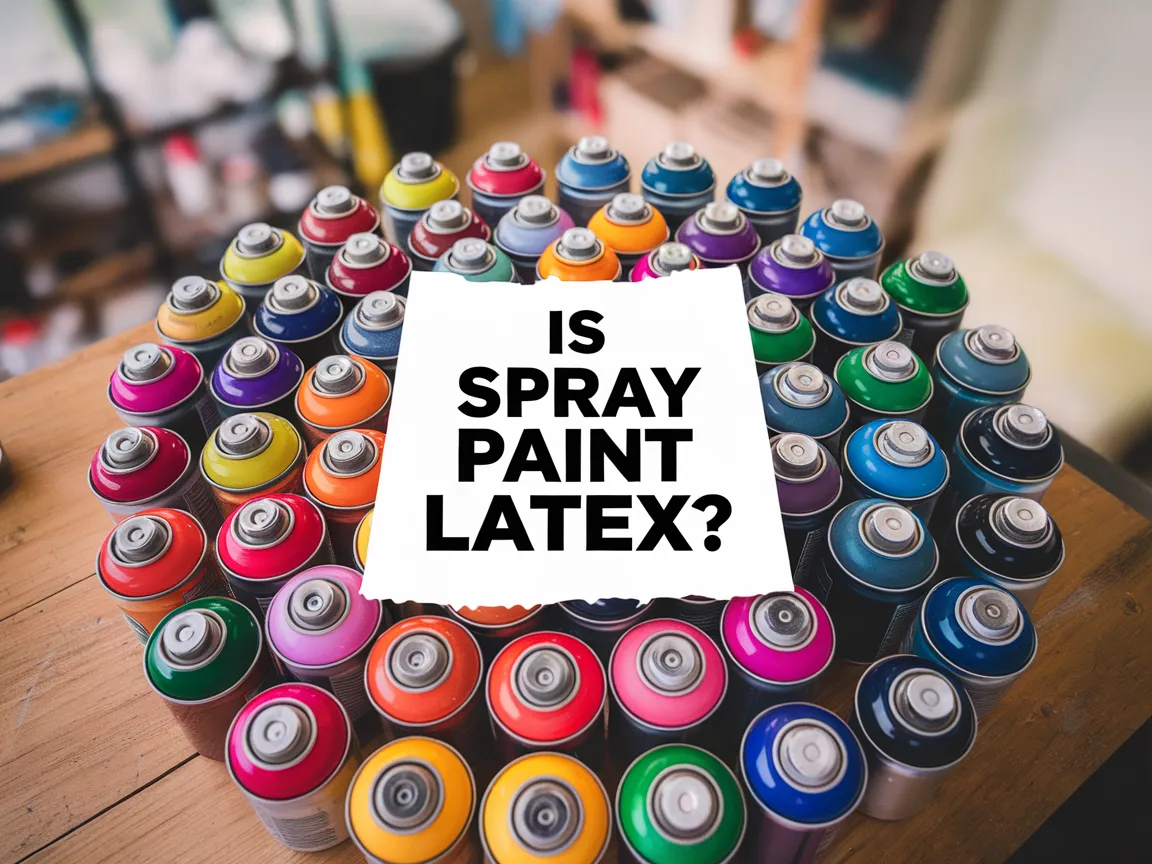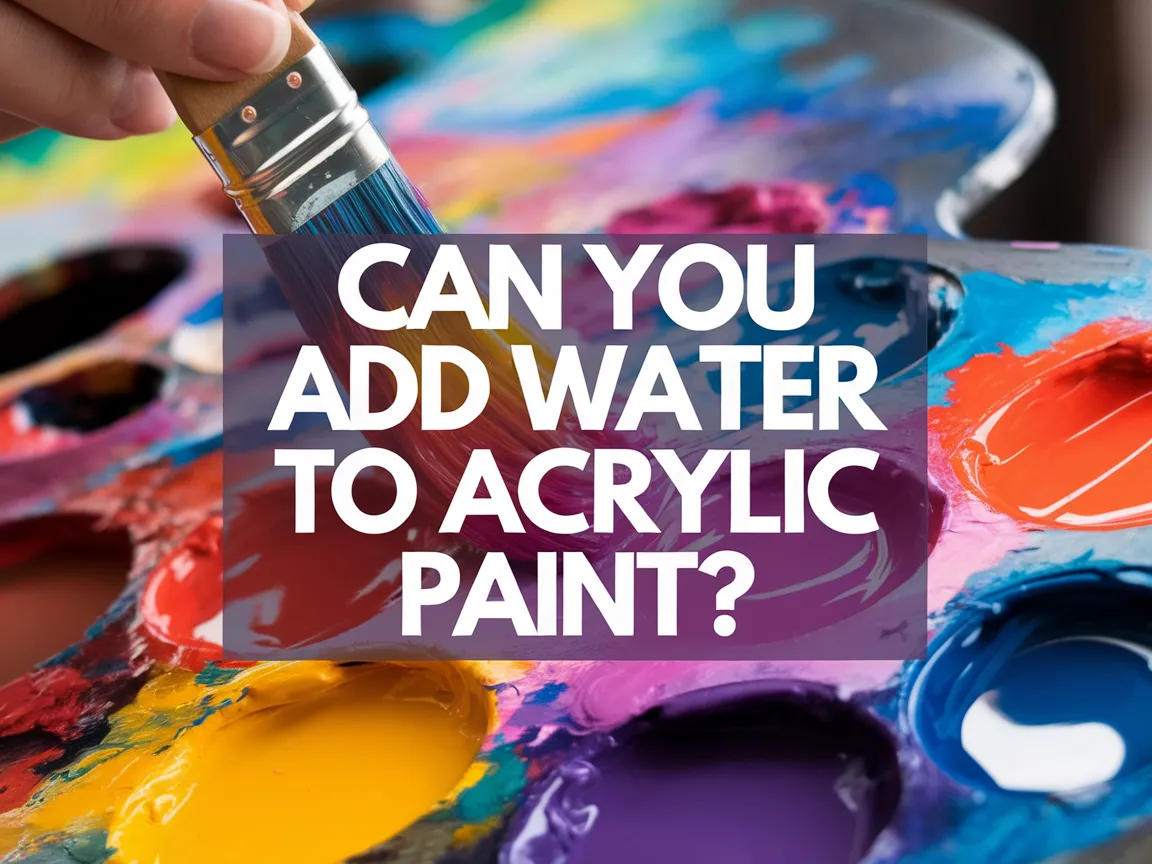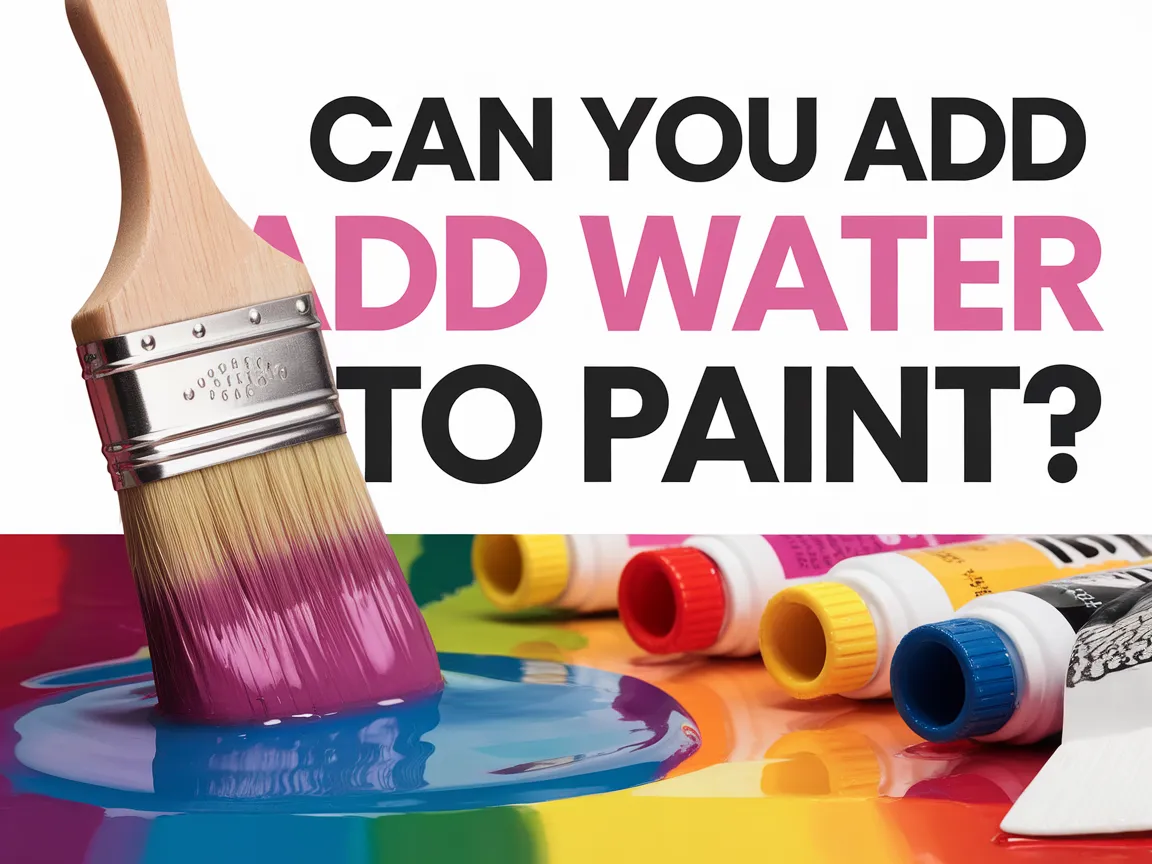Can You Use Vallejo Air Paint With A Brush?
Published on: April 17, 2025 | Last Updated: January 7, 2025
Written By: Isabella Cruz
Vallejo Air Paint is a special kind of paint designed for airbrushing. It’s super smooth and flows like magic, making it perfect for artists!
So, can you use Vallejo Air Paint with a brush? It’s important to know because using the right tools can really change your artwork. I’ve tried painting with it both ways, and trust me, the results can vary a lot!
In this guide, we’ll explore details like preparing your paint, steps for using Vallejo Air with a brush, the best colors to use, different types of paint, and common issues you might face. You’ll get tips on blending and cleaning your brushes, too!
Contents
- 1 Can You Use Vallejo Air Paint With a Brush?
- 2 What is Vallejo Air Paint?
- 3 Preparing for Your Vallejo Airbrush Painting
- 4 Steps to Effectively Use Vallejo Air Paint With a Brush
- 5 Benefits of Using Vallejo Air Paint with a Brush
- 6 Tips for Improving Your Brush Technique with Vallejo Air Paint
- 7 Comparing Vallejo Air Paint to Other Acrylic Paints for Brush Use
- 8 Types Of Vallejo Air Paint Suitable for Brush Use
- 9 Factors Affecting the Use Of Vallejo Air Paint With a Brush
- 10 Common Issues When Using Vallejo Air Paint With a Brush
- 11 Best Techniques for Applying Vallejo Air Paint with a Brush
- 12 Understanding the Drying Time of Vallejo Air Paint
- 13 Frequently Asked Questions About Using Vallejo Air Paint With a Brush
- 14 Conclusion
- 15 Additional Resources
Can You Use Vallejo Air Paint With a Brush?
Yes, you can use Vallejo Air Paint with a brush. Just make sure to thin it a bit for smooth application. It’s designed for airbrushing, but it works well for brushwork too. Painters often seek creative techniques to expand their painting possibilities. Experiment to find what works best for you!
The Finishing Touch
A freshly painted wall is a blank canvas. The best way to bring your room to life is with a single piece of statement art that ties everything together.
Browse Wall Art at Big Wall DecorWhat is Vallejo Air Paint?
Vallejo Air Paint is a high-quality acrylic paint designed for airbrushing. Unlike standard acrylics, it has fine pigmentation and controlled flow, making it perfect for detailed work. It typically comes in 17 mL (0.57 Fl Oz) bottles and is available in over 190 colors. Its formulation allows for soft blending and a smooth finish. Interestingly, the history of paint techniques stretches back millennia, with some remarkable discoveries revealing ancient painting mediums and artistic methods.
You might be wondering, “Can you use Vallejo Air Paint with a brush?” I’ve explored this question myself. While I love the ease of airbrushing, I found using it with a brush opened up new creative avenues in acrylic painting techniques. If you’re curious about alternative paint techniques, you can even transform acrylic paint into versatile ink.
I’ve used it for intricate model work. The ability to use both airbrush and brush makes Vallejo Air Paint versatile. When blending single-stage paint, it’s crucial to know how different mediums interact. I’ve learned it paints beautifully on textured surfaces. For a uniform coat, mix Vallejo Air Paint with a bit of water or medium for better brush application. If you’re working on specialized surfaces like aluminum, you might want to explore specific paint recommendations for metal. Are you ready to experiment?
Preparing for Your Vallejo Airbrush Painting
What do you need before you get started?
- Vallejo Air Paint Set: You need a set like the Vallejo Model Air Set. It’s designed for airbrushing, ensuring smooth application without clogging.
- Airbrush: A quality airbrush, such as the Iwata Eclipse HP CS, is essential for optimal control and fine detail. You can’t achieve the same precision with a brush.
- Compressor: A compressor like the California Air Tools CAT-1P provides a consistent air supply for even painting results.
- Thinner: Use Vallejo Airbrush Thinner to achieve the right viscosity. It prevents the paint from drying too quickly in the airbrush.
- Cleaning Kit: A cleaning kit with products like Simple Green is necessary to keep your airbrush in top condition for longevity and performance.
That covers preparing for your Vallejo airbrush painting. Let’s now take a look at effectively using Vallejo air paint with a brush.
Also See: Where Can You Rent a Paint Sprayer? Local Options
The Finishing Touch
A freshly painted wall is a blank canvas. The best way to bring your room to life is with a single piece of statement art that ties everything together.
Browse Wall Art at Big Wall Decor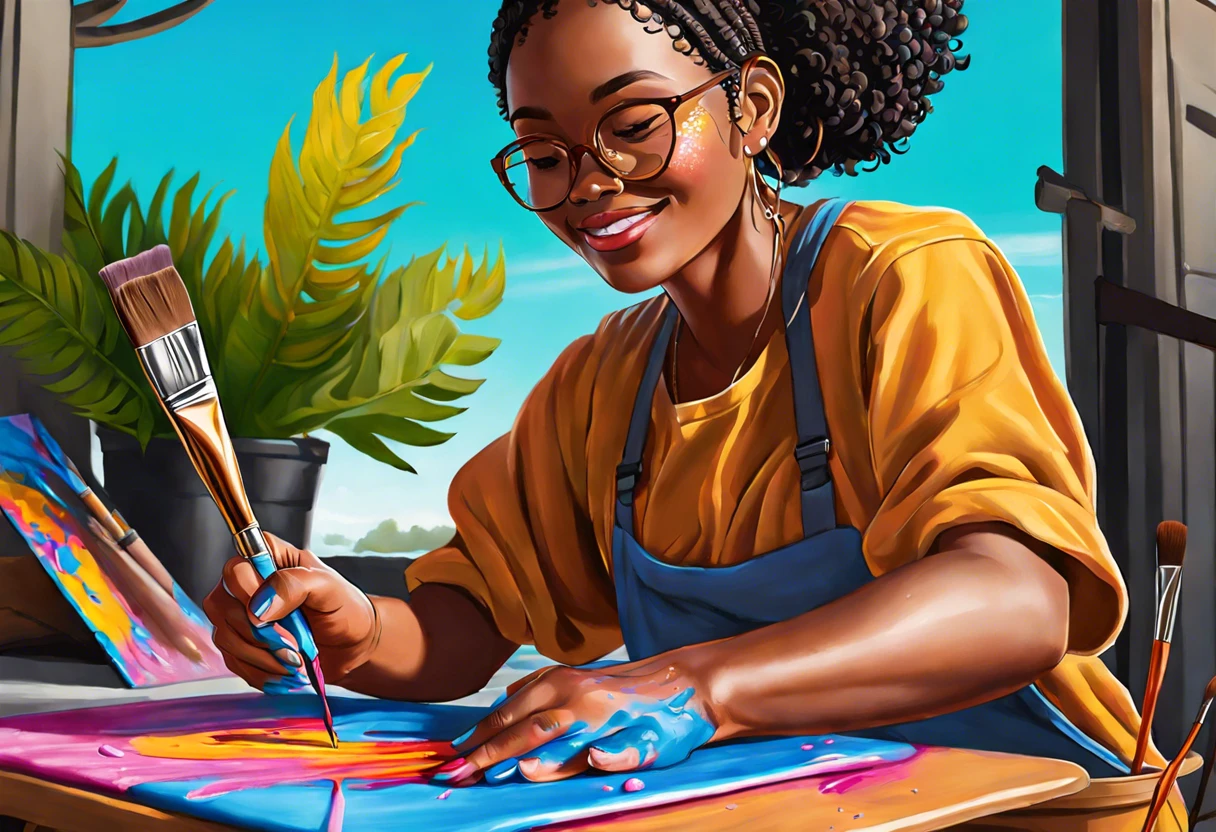
Steps to Effectively Use Vallejo Air Paint With a Brush
Here are the steps to maximize Vallejo Air Paint’s potential when brushed.
-
Thinning Your Paint
Add a few drops of Vallejo Airbrush Thinner to your paint. A common ratio is 1 part thinner to 2 parts paint, but adjust it based on your technique.
If your paint’s too thick, it won’t spread well. Remember, thinner paint produces smoother finishes—especially when brushing.
-
Choosing the Right Brush
Use synthetic brushes with soft bristles to avoid streaks. A size 0 or 1 round brush works well for precise detailing.
The brush affects the outcome. A higher-quality brush saves time on rework, so invest in one!
-
Testing on a Sample Surface
Before starting your main piece, always test on a scrap surface. It’s easier to see how the paint interacts with the material.
Take my advice: I once skipped this step and had to repaint an entire model! Test first to ensure compatibility and avoid heartache.
-
Applying the Vallejo Air Paint
Apply the paint in thin layers for better control and blending. Start lightly and gradually build coverage; this reduces the chance of drips.
For optimal results, paint in a well-lit area. This lets you see how the layers lay, enabling adjustments on the fly.
-
Cleaning Your Brushes
Immediately clean your brushes with warm water and brush soap after use. A clean brush maintains its shape and lasts longer—trust me!
To switch colors easily, rinse your brush with water in between, but don’t let the paint dry in the bristles. You’ll thank yourself later for avoiding clogged brushes.
You should now have a good understanding of how to effectively use Vallejo Air Paint with a brush. In the next part, we’ll discuss the advantages of using Vallejo Air Paint with a brush.
Benefits of Using Vallejo Air Paint with a Brush
Using Vallejo Air Paint with a brush has its perks. Let’s dive into some of the key benefits!
- Detailing: You can achieve incredible detail that airbrushes sometimes miss. With a brush, you can focus on those tiny elements that bring your project to life!
- Versatility: Brush application allows you to work on various surfaces, from plastics to canvas. Vallejo Air Paint adheres well, making it flexible for different projects.
- Control: Got a tricky spot? Brushes give you the control to reach tight areas that might be hard for an airbrush. Say goodbye to overspray!
- Texture: You can create unique textures that enhance your artwork. Techniques like dry brushing can’t be done with an airbrush.
We have now covered the advantages of using Vallejo Air Paint with a brush. Next, we will explore tips for enhancing your brush technique.
Tips for Improving Your Brush Technique with Vallejo Air Paint
Want to elevate your Vallejo brush game? Here are some handy tips!
-
Layering:
Apply multiple thin coats for better coverage and depth. It’s like building a foundation for your paint!
-
Mix Your Own Shades:
Experiment and create custom colors by mixing. Vallejo Air Paint blends beautifully, so don’t be afraid to play!
-
Practice:
Try practicing on scrap materials. You’ll build confidence and discover what feels best for your style.
You should now have a good understanding of enhancing your brush technique with Vallejo Air Paint. In the next part, we’ll discuss comparing Vallejo Air Paint to other acrylic paints.
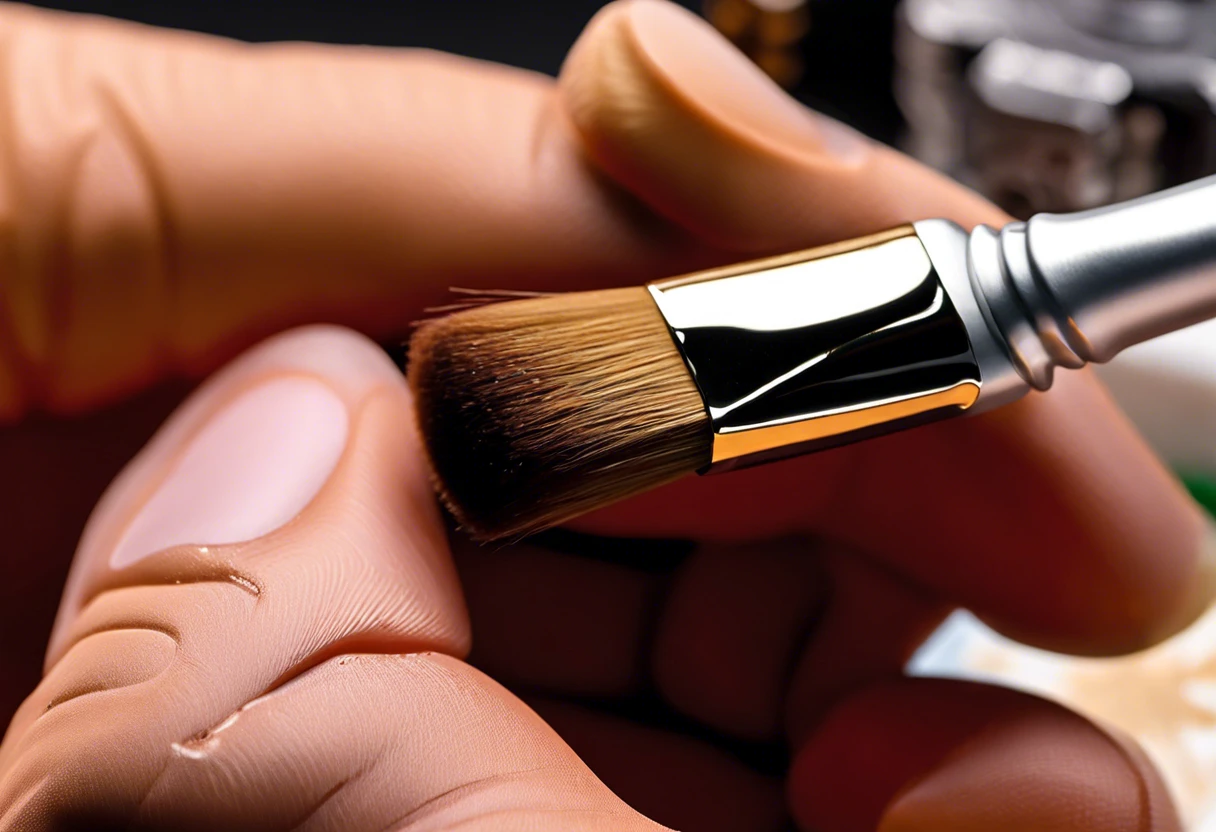
Comparing Vallejo Air Paint to Other Acrylic Paints for Brush Use
How does Vallejo Air Paint stack up against regular acrylics? Let’s look at a quick comparison!
| Feature | Vallejo Air Paint | Other Acrylic Paints |
|---|---|---|
| Viscosity | Pre-thinned for airbrush and brush use | May require thinning before use |
| Finish | Smooth finish with excellent blending | Varies with brand and formulation |
| Color Range | Over 190 colors available | Limited options; may require mixing |
| Adhesion | Strong adhesion to various surfaces | Can struggle on non-primed surfaces |
Types Of Vallejo Air Paint Suitable for Brush Use
Let’s explore the different types: Metal Color, Model Air, Surface Primer, and Liquid Watercolor.
-
Metal Color
Metal Color is ideal for metallic finishes. It contains fine metallic particles, making it perfect for brush use with a smooth application.
-
Model Air
Model Air is designed for brush use. Its fine, pre-thinned consistency allows immediate application without dilution.
-
Surface Primer
Surface Primer prepares surfaces for painting while promoting adhesion. It’s versatile, usable with both brushes and airbrushes.
-
Liquid Watercolor
Liquid Watercolor offers vibrant, transparent layers. It’s perfect for washes and works well with a brush for detailed work.
From my experience, Model Air feels great for brush use. Its consistency ensures smooth coverage every time, which is especially useful for small details.
Factors Affecting the Use Of Vallejo Air Paint With a Brush
What factors determine whether Vallejo Air Paint works well with a brush?
-
Viscosity – Thicker paint can cause brush strokes and uneven coverage.
-
Brush Type – A fine, soft brush offers smoother application and minimizes damage.
-
Dilution – Adding a medium can improve paint flow and enhance blending.
-
Application Technique – Using quick strokes prevents smudging and ensures a clean finish.
The Finishing Touch
A freshly painted wall is a blank canvas. The best way to bring your room to life is with a single piece of statement art that ties everything together.
Browse Wall Art at Big Wall DecorCommon Issues When Using Vallejo Air Paint With a Brush
Once, my friend tried using Vallejo Air Paint with a brush for details. It left streaks because the paint’s thinner consistency runs easily. Frustrating, right?
To fix this, she added a drying retarder, which slowed the drying time. Thinning it by just 10% with distilled water worked wonders. Now, she gets smooth, even strokes every time!
Best Techniques for Applying Vallejo Air Paint with a Brush
To really make your Vallejo Air Paint shine with a brush, you’ll want to use some effective techniques.
-
Wet-on-Wet Technique
This involves applying wet paint onto wet paint. It’s great for blending colors smoothly. Keep your brush damp but not dripping to create soft transitions.
-
Dry Brushing
Use this to highlight textures. Dip your brush lightly in paint, then wipe most of it off on a cloth. This technique emphasizes raised areas without flooding the details.
-
Glazing
Mix Vallejo Air Paint with a medium to create a transparent layer. Apply it over dry paint to achieve depth and richness without covering the base layer.
Understanding the Drying Time of Vallejo Air Paint
It’s crucial to understand how long Vallejo Air Paint takes to dry. This affects your work significantly!
| Temperature (°C / °F) | Humidity (%) | Drying Time (Minutes) |
|---|---|---|
| 20 / 68 | 40 | 30 |
| 25 / 77 | 60 | 20 |
| 30 / 86 | 80 | 15 |
Under warmer conditions with lower humidity, Vallejo Air Paint dries faster. But be cautious—too much heat can lead to cracking! What’s your go-to drying environment? Let’s chat about it!
Frequently Asked Questions About Using Vallejo Air Paint With a Brush
Can I Use Vallejo Air Paint Without Thinning It?
Yes, you can use Vallejo Air Paint without thinning it. However, thinning improves flow and detail application, making your painting smoother.
What Type Of Brush is Best for Vallejo Air Paint?
The best brush for Vallejo Air Paint is a synthetic, soft bristle brush. These brushes hold their shape well and work great for detailed work, especially since they can handle the paint’s viscosity better. If you accidentally get paint on your clothing during your art project, you can remove acrylic paint stains effectively.
How Do I Clean My Brush After Using Vallejo Air Paint?
To clean your brush after using Vallejo Air Paint, rinse it thoroughly with warm water. Follow this up with soap to eliminate any leftover paint, ensuring your brush stays in good condition.
Can I Mix Vallejo Air Paint With Other Paints?
Yes, you can mix Vallejo Air Paint with other high-quality acrylic paints. For best results, stick to water-based paints to maintain a nice consistency and drying time.
Is Vallejo Air Paint Safe for Kids?
Yes, Vallejo Air Paint is generally safe for kids when used under adult supervision. It’s non-toxic, but you should always ensure good ventilation and prevent ingestion.
How Do I Fix Paint That Dries Too Quickly?
If your Vallejo Air Paint dries too quickly, try adding a medium like Vallejo Retarder or using a wet palette. This helps extend drying times and allows for better blending.
What Can I Do if My Paint Isn’t Sticking?
If Vallejo Air Paint isn’t sticking, ensure the surface is clean and primed. A proper primer helps the paint adhere better, leading to smoother applications.
Can I Airbrush Vallejo Air Paint Straight From the Bottle?
Yes, you can airbrush Vallejo Air Paint straight from the bottle. The paint is formulated specifically for airbrushing, providing a fine finish without the need for thinning.
Is There a Difference Between Airbrush and Regular Acrylic Paint?
Yes, airbrush paint is thinner and designed for smooth application through an airbrush. Regular acrylic paint might not flow as well and could clog the nozzle.
Conclusion
We’ve reached the end of our guide, and I hope you found it informative. We covered what Vallejo Air Paint is, how to prepare for airbrush painting, the steps to use Vallejo Air Paint with a brush, the recommended color palette, suitable types for brush use, factors affecting application, common challenges, finishing touches to elevate your project, and some DIY ideas.
In summary, you can indeed use Vallejo Air Paint with a brush. Just be sure to thin the paint correctly for a smooth finish and monitor its consistency. If you have any further questions about painting, feel free to reach out—I’m here to help!
For more insights and resources, check out Paint Answers.
Additional Resources
- Smith, R. (2003). The Artist’s Handbook of Materials and Techniques (5th ed.). New York, NY: Knopf.
- Vallejo Game Air any good with brush? – Forum – DakkaDakka
- r/Warhammer40k on Reddit: Can I use regular brush for Vallejo Air Paints?
Isabella is a Filipino-American art writer and critic specializing in contemporary painting, blending her Filipino heritage with global art trends. She holds a BFA from California State University, Long Beach, and a Minor in Art History from the University of the Philippines. Isa has experience as a Gallery Assistant, Art Appraisal Specialist, and Social Media Creative for Art & Design.
Acrylic, Medium






